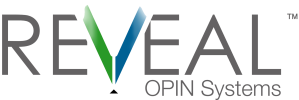When was the last time you looked at your childhood photo book?
It’s been a few years since I pulled out mine.
Even though you rarely look at your childhood photos, do you keep them front and center? Do they take up space that should be reserved for your kids’ much more recent pictures?
I hope not.
An organized house is all about deciding what needs to be easy to access and what you can tuck out of sight in a closet.
You should do the same thing with your company’s content. I’ll bet you don’t need every piece of content live and accessible to every employee 24/7.
Enter content archiving.
Archiving speeds up everyone’s workflows. It tidies up content repositories and archives old info.
Ready to dive into content archiving? Here are 5 questions you should ask yourself.
1. When should I archive content?
You have too much data.
Did you know that the healthcare industry generated 150 exabytes of data in 2011? They’ve reached their limit. Keeping all that data in primary storage isn’t be feasible. Even now, it doesn’t work—about 7.5 percent of all documents get lost.
Every company will reach a point at which they cannot store all their data in primary storage. Have you reached a similar point? Then it’s time to archive.
Make sure you combine a solid retention policy with your archiving application. You wouldn’t want 7.5 percent of your documents to sink into an unorganized abyss, would you?
Your retention policies aren’t working
We have a customer with an enormous document library—and retention settings to match. But no one will enable the retention policy because it will delete content. No one wants to be responsible for deleting something of vital importance.
Archiving software helps enforce retention and deletion policies. You may have a clear policy, but if it isn’t turned on, it isn’t doing any good.
Archiving software works with your data retention policies. They tell the software which content to archive and which content to delete. When they’re automated, you don’t have to worry about the risks of relying on employees to carry them out.
2. What content should I archive?
You define the parameters that your archiving application uses to sort through content. Then, they use your established parameters to identify outdated content.
Here are some examples of content you might want to archive:
- Content older than 6 months
- Documents older than 5 generations
- Statements older than 7 quarters
You get to decide which inactive content your application archives and deletes. Anything that people don’t regularly need could be a good thing to archive.
Figuring out what content to archive is as easy as…
- Checking how often people access old generations of the same document
- Reviewing your information governance requirements
- Finding out your e-discovery accessibility needs
And there are similar applications that move content from legacy applications into archives. So you can finally decommission legacy applications without compromising compliance.
3. How much should I limit access to archives?
To figure this out, you’ll need to decide who and how people can access archived documents.
If you don’t limit access, any employee (or even customer) could mess things up.
For example, let’s look again at the healthcare industry. There, limiting archives access is the difference between everyday operations and enormous lawsuits.
Accessibility
From CEO to manager to receptionist, each employee needs access to different files. Few (if any) will need access to all files.
Archiving applications enforce access permissions for you. Only permitted files appear for each individual.
You’ll also need to decide how you’ll remind employees about relevant company policies. They shouldn’t have unrestricted access to every file they’ve ever read.
Types of access
Archiving applications let you give varying levels of access. These are your usual choices: read, write, edit, and destroy.
Let’s look at some examples of when each would be appropriate.
- Administrators or automated processes may be the only ones who can write or archive content.
- Document authors or administrators may be the only ones who can destroy original archived documents.
- Managers may be able to edit archived documents they can access.
- Clients may only be able to read the archived documents that they can access.
Let’s look back at the healthcare industry. For them, HIPAA dictates document access and retention. Healthcare employees who interact with electronic health records (EHRs) must understand the regulations.
4. Where should I store archives?
You have 2 options for storing your archives:
- Move archives into the cloud
- Use a physical, in-house data center
Unsure which is best for you? Here’s a good first step. Calculate your total cost of ownership (TCO) for on-premise versus off-premise storage centers. Then, keep reading to learn some of the pros and cons of each.
Cloud storage (off-premise) options
To say that cloud storage is popular would be an understatement.
Did you know 93 percent of businesses were already using cloud storage as of 2015?
That’s a lot.
With the right set up, cloud storage is faster, cheaper, and safer.
Retrieving archived documents from the cloud may be quicker than using in-house servers. Plus, accessing archived documents from the cloud can be more intuitive. So employees won’t need special training on how to access documents. No training gap means you can access archived content within 1 hour instead of waiting weeks for IT to fetch it.
You could save money by moving to the cloud. You won’t pay for on-site electricity for the servers or replacement servers every 5 years or so. And you’ll have less downtime. Another way you’ll save money is by not installing more servers as data accrues. Your cloud storage will expand as you need more space.
Compared to in-house servers, cloud storage can be safer. Cloud storage offers added security through a VPN, access controls, and homomorphic encryption.
If you choose to archive your content in the cloud, you’ll be maximizing your time, money, and security.
On-premise options
Physical data centers can be pricier than cloud storage. You have to factor in the costs of physical space, servers, and electricity.
No matter how well you design your data center, cooling servers will take up a big part of your electricity bill.
It’s not all bad, though.
With on-premise servers, you won’t worry about outbound bandwidth costs from cloud providers. Nor will you worry about having enough internal bandwidth to access the cloud.
Physical data centers are fighting to stay relevant. Every day, they’re working to mirror the benefits of cloud storage. From security to accessibility, compliance to cost efficiency, they’re finding ways to compete.
5. Why should I archive content?
Why wouldn’t you?
In a minute, I’m going to walk through some of the biggest benefits of archiving content. First, though, I want to give a quick reminder.
Remember: Not every archiving application will have all these benefits. So before you settle on an application, review your company’s policies to make sure it’s a good fit.
Onto the good stuff!
Streamlined Searching
Archiving software organizes archived documents using metadata and tags. So you can search for and find what you need. Say goodbye to wasting time trying to understand the application the data came from.
And make sure you’re up to date with your retention policies. You’ll better know where to search for specific documents.
Disaster Recovery
Did you know that archived documents are easier to recover than documents in primary storage?
In the case of disaster—natural or otherwise—you need to be able to produce backups of original files. You’re not off the hook if a tornado destroys all your storage. IG requires that you plan for disasters.
Luckily, archives make it easier to create backups. You’ll be amazed at how easy it is to create, implement, and ensure the success of backup solutions.
Before archiving, your documents were probably on a local computer or non-controlled file share. Archiving gathers these documents into a centralized location. Then, you can be sure they’re backed up.
Plus, archiving makes it easier to find new content in primary storage that you still need to back up.
Accessibility
Whether you opt into off-site or on-site archiving, you’ll have increased accessibility.
You can choose an archiving application with advanced organization and search features. They’ll make using the software that much easier. And navigation will be a breeze.
Really quick, I want to take a minute to talk about how archives and backups are different. Please remember that backups are for recovery while archives are for discovery. Your backups do not need to be easy to search through or access because they are for worst-case scenarios. But your archives do need to be easy to search through and access because they’re for compliance. The backup solution you use won’t ease e-discovery like most archiving applications will.
Cheaper maintenance
There are 2 main ways archiving applications help you save money. They have lower human capital expenses and let you decommission old software.
When you archive documents, you won’t need to sort through masses of unorganized data to find old content. Every time you need to find a specific record or email, you won’t waste hours or even days. Instead, you’ll save human capital expenses because archived documents are better organized.
Retiring legacy applications could also save you significant costs. Because they’re removed from their original applications, archived documents are cheaper to maintain. In fact, decommissioning legacy applications could free up your IT budget by 50 percent.
Cut litigation risk
With your documents safe and sound, you can reduce your litigation risks. You’ll maintain IG compliance and increase ease of e-discovery. Archiving applications allow you to put in place defensible deletion solutions.
You’ll not only have clear reasons for retaining documents. You’ll also have clear reasons for deleting documents, minimizing your litigation risks.
Consistent retention policy enforcement
You need to find a balance between regulatory compliance and retaining every document forever. When you do, you’ll save both time and money. Data retention policies ensure immunity during litigation if certain data has been deleted.
It’s unreasonable to manually locate and delete data subject to your retention policy. Instead, archiving applications locate that data for you. Then, they can either delete it or move it to long-term, low-cost storage.
Software and hardware reliability
Documents stored in their original software need IT upkeep.
Some companies use 70 percent of their IT maintenance budget to maintain legacy applications. And all that because compliance prevents them from deleting the contained data. Even with IT maintenance, the original software may crash. The hardware can also fail, rendering important documents unusable.
If you archive that data, you can resolve those risks. You won’t have to worry about old software crashing. And you’ll have enough left over in you budget for more profitable projects.
Condense domain knowledge
Moving documents to archives lets you retire legacy applications. Free from old software, you’ll stay up to date on the latest, most efficient software for your needs. Employees and IT won’t need as much domain knowledge either.
How to apply this to your business
Ready to start archiving your documents? Try the steps below to start out.
- Test your current archiving methods.
- Find out where you’re manually archiving and define the process.
- Calculate your TCO for using in-house servers versus the cloud for archives.
Any more questions or comments? Hit up that box in the top right. We’d love to hear from you!
Free guide: The ins and outs of content archiving


